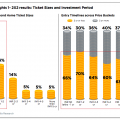The talks of climate awareness for policies and compliance are getting loud and wide, and as COP26 summit in Glasgow shows, the role of real estate in the climate risk is getting attention worldwide.
The latest report by Cushman & Wakefield—The Real (E)state of Emergency, shows that construction and buildings cause 39 percent of the global carbon emissions. (Source.)
For India, and globally, climate risk assessment at both the organisational and project levels is the main impact of the IPCC sixth assessment report, according to RK Gautham, Director of Sustainability at Cushman & Wakefield India.

As the modern real estate prepares itself for the climate changes, the property owners, stewards, investors, and tenants, all feel the impact on the building sustainability. This is because when the property depreciates faster, its maintenance cost increases whether for regular maintenance or penalties.
Many buildings in Mohali and Zirakpur show a *Green Building* certificate in the facility itself whether in the visitors’ reception area, or in lobby. Real estate are long-term assets. The projects in Mohali Aerocity and on the Mohali Airport Road promise a lot of economic growth in the region and adjacent locations for business, employment, retail and logistics, and housing demand. The commercial and residential property owners need to plan for beyond the certificates, to make real and meaningful contribution for the climate compliance.















People reacted to this story.
Show comments Hide comments[…] commercial and residential real estate is increasingly committing to the compliance to climate, including the green building principles in design and construction. They can also try to meet […]